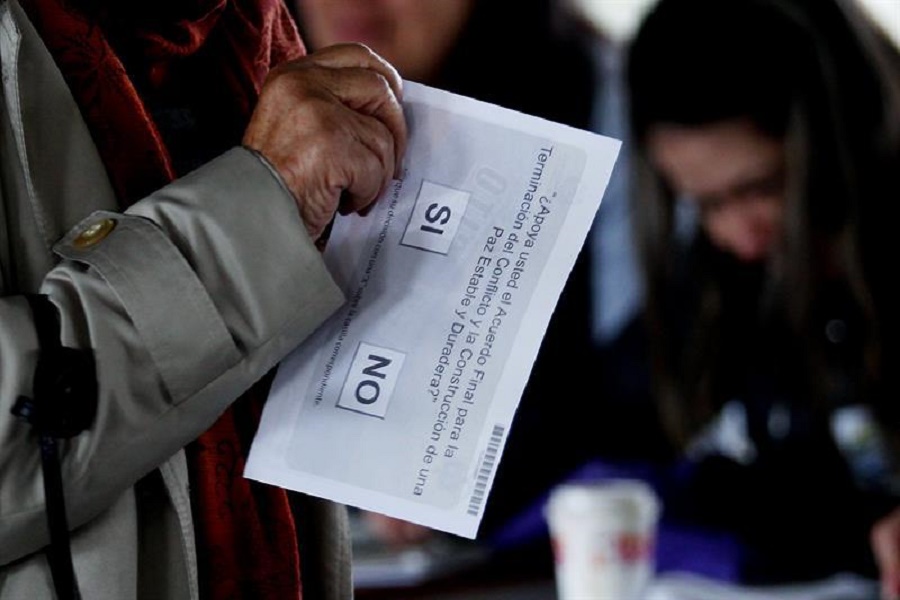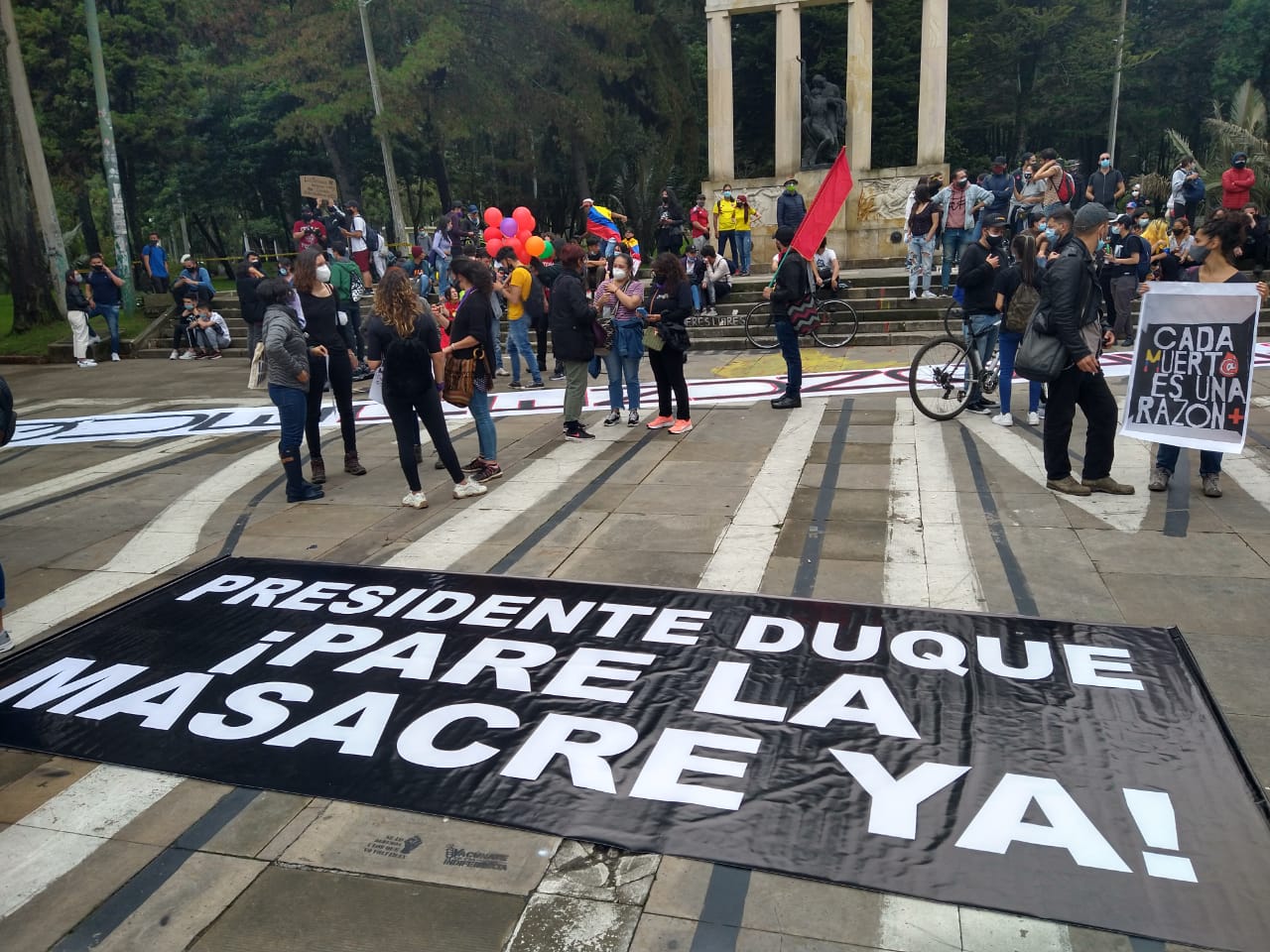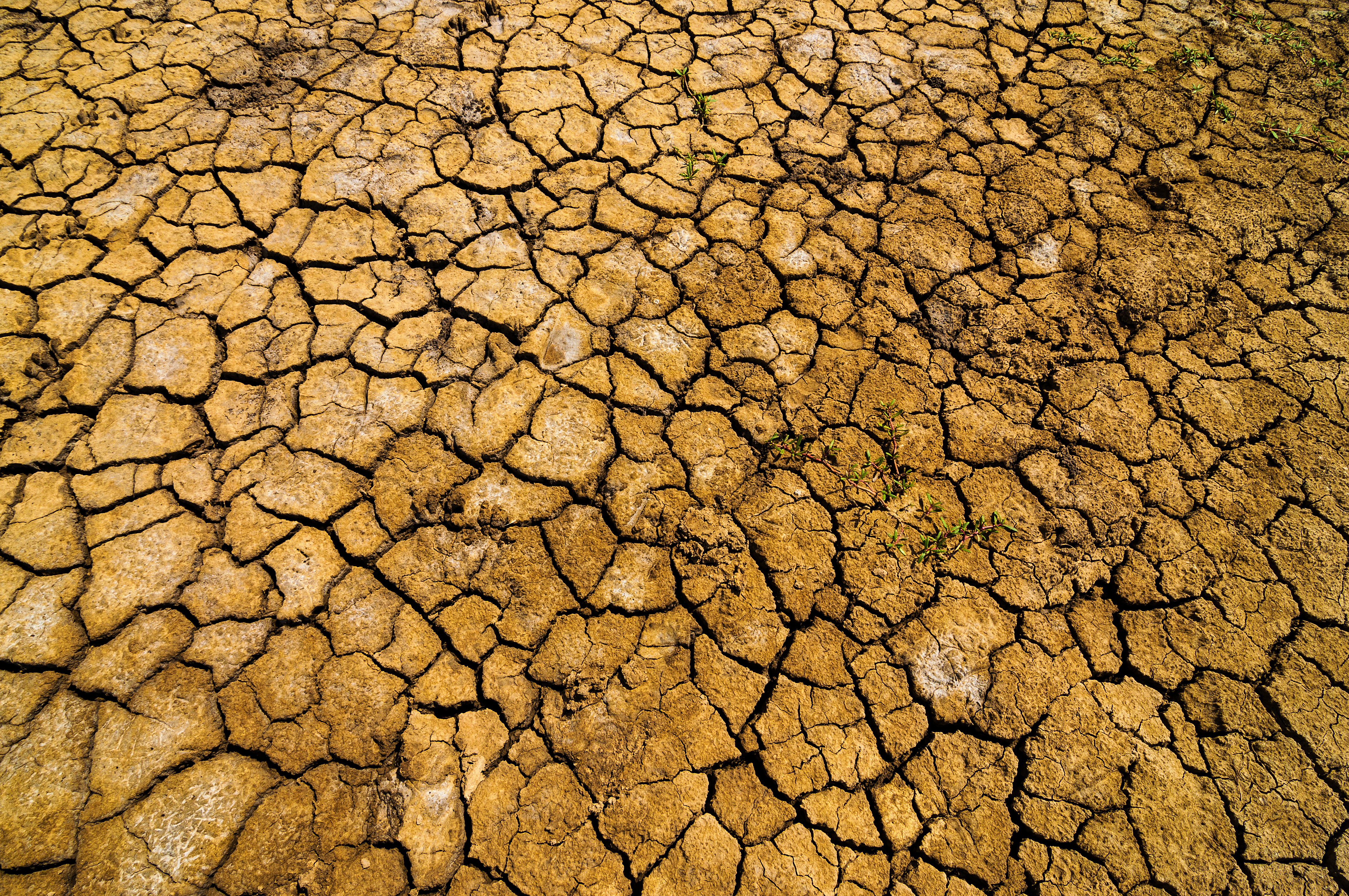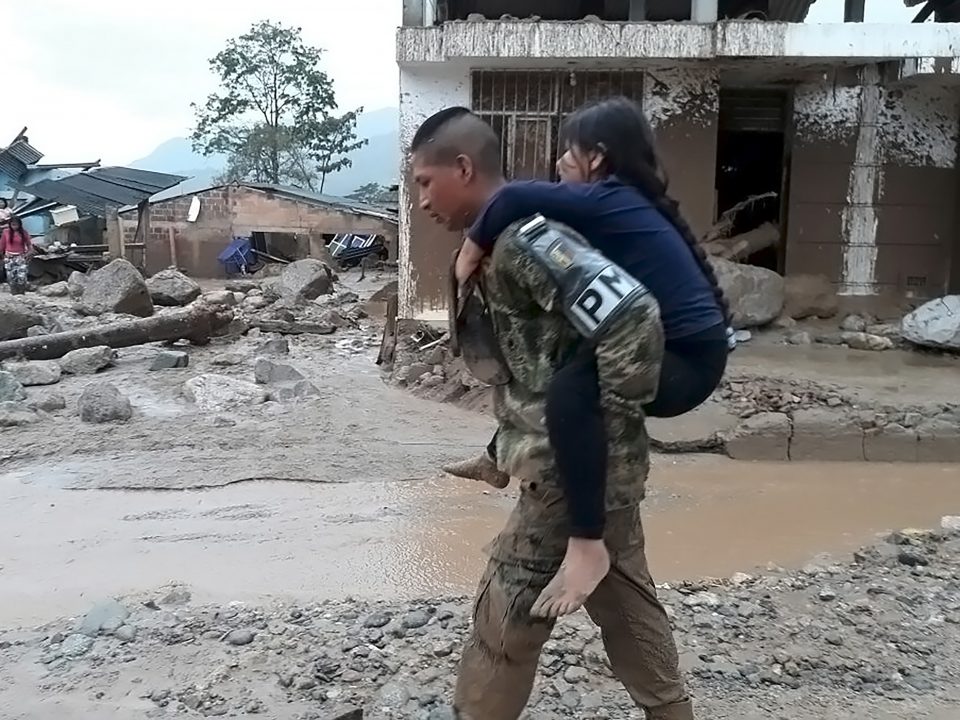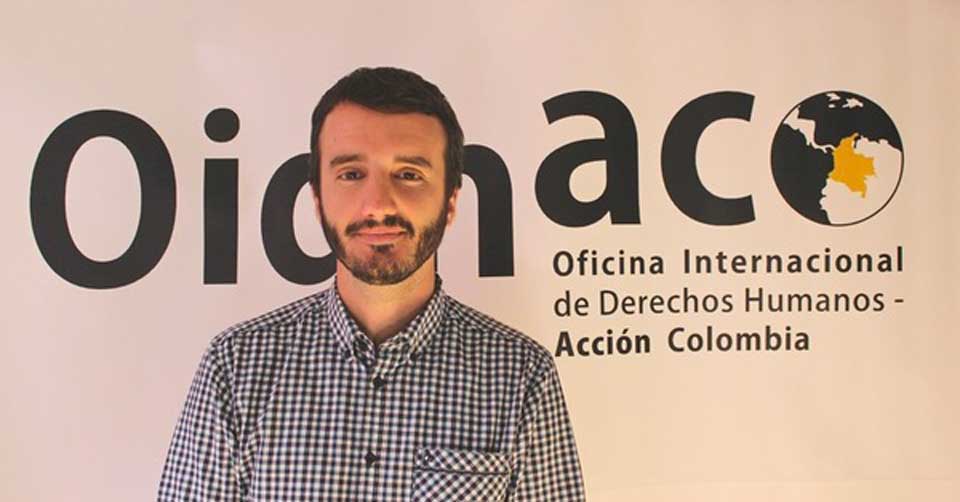
Miguel Choza Fernández of the OIDHACO.
Miguel Choza Fernández of the International Office for Human Rights Action on Colombia (OIDHACO) speaks to Emma Newbery about the growth in paramilitary activity and some of the other threats to creating a lasting peace.
“The situation is worse,” Miguel Choza Fernández, from the International Office for Human Rights Action on Colombia tells me, referring to the increase in paramilitary activity and violence against human rights defenders in Colombia since the signing of the peace agreement.
He believes that paramilitary activity is currently the biggest threat when it comes to implementing the peace accord and that the government has to take strong and decisive action.
“Even though the agreement has been signed, the forces and groups opposed to the agreement are trying to avoid implementation – to harass leaders, peace workers,” Choza explains. According to him paramilitary and armed criminal and groups that have traditionally controlled certain areas are trying to demonstrate that they are going to continue to control them.
We believe that the best thing for the government would be to recognise that there is a problem and to fight them with the capacity they have.
With over 30 activist killings already this year, and several incidences of paramilitary incursions into rural communities, the violence is increasing rather than decreasing. And the continued actions of these groups will hinder several important aspects of implementation such as land restitution and FARC reintegration.
Choza – who has spent eight years working with human rights and development issues – says, “Above all the land restitution and rural reform could be very affected […] and suffer if the armed and paramilitary groups won’t leave certain territories. Paramilitary activity ensures that economic groups maintain their power and privileges ahead of [the needs of] communities and that’s something very dangerous.”
OIDHACO, a network of European organisations dedicated to promoting democracy and human rights in Colombia, stands alongside many national and international organisations in expressing serious concerns about the current situation.
Right wing paramilitary groups came to prominence in the 1950s and 60s, paid by the government and businesses to attack left wing guerrilla groups such as the FARC, M19 and the ELN. As with many stories where the cure turned out to be worse than the disease, the paramilitaries themselves became violent organisations, funded by illegal activities. While the United Self-Defence Forces of Colombia (AUC), the biggest paramilitary group, officially demobilised in 2005, Choza says today’s paramilitaries “are not the same structures we had before 2005, but most members are the same. Most of their way of acting is the same and their armed capacity is still there.”
Asked about what needs to be done, he is clear: “We believe that the best thing for the government would be to recognise that there is a problem and to fight them with the capacity they have – so the police, the powers of the judiciary and the structures of the state.”
However, it’s not that simple, as Choza explains: “The problem is that there are still many links between these groups and these institutions and many people from both the paramilitaries and the institutions make profit from the relationships, so it’s not easy to transform or to cut those relationships so fast.”
Political will is essential. “I think it will take years, but only if there is strong political will to do so.”
One step in the right direction might be to extend the mandate of the UN monitoring mission in Colombia to include human rights issues, which Choza says is something the government and the FARC could request.
“The present mission does not have a human rights component,” he explains, adding that the civil and human rights element of the mission is almost more important than a military one.
Choza identifies several other challenges on the road ahead, the big one being the lack of hard cash.
“We don’t think the Colombian state has enough economic resources to implement the agreement,” he says, adding that it is an area where the international community need to give their support.
Those resources will be crucial when it comes to implementing what is a very intricate set of agreements.
For example, with regard to land restitution, Choza points out that up to now, only about 4% or 5% of land has been returned. “It’s a very, very complex process,” he says, as “the land could have been in the hands of three, four or five different owners.”
Both resources as well as political will is essential to investigate what land was grabbed and what restitution needs to be provided – either in terms of returning the land to its original owner, or providing compensation.
OIDHACO is also concerned about the way the truth and justice system will be implemented, and of course the possibility that the winner of next year’s general election may try to suspend or make significant changes to the peace accord.
But it’s not all doom and gloom. “Of course we are optimistic,” Choza smiles when I ask him about the future. “But there is a lot of work to do and a lot of years of implementation, of legislative development, of uncertainties.”
“We need these three things to happen to get a sustainable peace in Colombia: for the FARC agreement implementation to be successful, for the negotiations with the ELN to be positive and lead to an agreement, and for the fight against paramilitary activity to be strong and decisive on the part of the government.”


